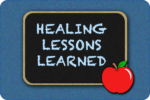
Most people know that a condition called “chronic pain” exists. But like many illnesses, it’s hard to understand unless you’re afflicted by it. And those of us dealing with chronic pain often don’t talk about it – at least in mixed company. We don’t want to appear weak or complaining.
In this post, I hope to shed light on what it’s like to have chronic pain, including some reasons why it’s hard for others to understand.
1. Everyone experiences pain at some point in their lives.
The good news is that everyone knows what pain feels like. The bad news is that everyone knows what pain feels like. Knowing how unpleasant pain is makes it really difficult for people to wrap their heads around the idea of being in pain ALL the time, day after day, week after week, let alone month after month, year after year. Imagine a doctor telling you the following:
For the next ten years, you will experience 29,400 hours of pain. Each year, you can expect 305 days of pain.
That’s probably a conservative estimate. I used the following formula:
Just half day of pain: 12 hours X 365 = 4,380 hours per year, then subtracting 60 full days per year (accounting for one full day a week that might be low pain) = 4,380-1,440 = 2,940 x 10 = 29,400.
You plan on sticking around for that? Any sane person would decide to call it quits after how long? 100 hours? 1000 hours?
2. The myth that pain is the same for everyone.
Many people know someone – or at least a story of someone – who worked full time jobs despite chronic pain. Someone who “pushed through the pain” and “did it anyway”. So if they can do it, everyone should.
The problem with this logic is that it assumes that:
- chronic pain is one monolithic condition and
- every person with chronic pain is the same
Neither are true.
I know what it’s like to have widespread muscular pain, but I do not know what it is like to have back pain or arthritis. I also have a low tolerance for pain, likely due to my anxiety condition which makes my central nervous system hypersensitive. It is a medical fact that people have different thresholds for pain.[1]
Still, it is all too tempting to tell those not doing well with their pain that they are just not trying hard enough. That they are weak. This is not helpful. Shaming people in pain only makes things worse. Try compassion instead.
3. Chronic pain is usually not visible.
Chronic pain is usually an invisible condition. We simply don’t look sick. And if we don’t look sick, it’s hard to convince others that we are hurting. But if we turned green from head to toe, people would surely be taken aback! Sometimes we grimace, move unevenly, or use canes or walkers. But often you cannot tell by looking at a person that they suffer from chronic pain. This contributes greatly to the lack of understanding of, and sympathy for, people with chronic pain.
4. People only see us on our “good days.”
I usually only leave the house when I feel well enough to. The few hours that the pain pills actually work. The rare day that my symptoms take a holiday. It happens. But although those times are not my norm, they are usually the only times other people see me. So they base their assumptions about my wellbeing on those experiences.
5. We put on a happy face for others.
Complicating matters is that not only do I look “normal” on the outside, I make an effort to put on a “happy face” for those rare, few hours I actually leave my house. What am I going to do, start screaming like a Banshee up and down the grocery isle? Yell at every store clerk I meet? Walk into someone’s house with the greeting, “I’m miserable!” Of course not. I’m going to do my best to act like a civilized human being.
6. Fatigue and Pain Go Hand in Hand
Being in pain is exhausting. It took me years to understand this – no one ever told me. I expected to feel better when the pain eased. That I’d be able to get caught up on tasks. Instead, I was often hit with unbelievable fatigue. I had no energy and was too weak to sit up. I criticized myself for being lazy.
Eventually I realized it was an after effect of being in pain. I noticed the fatigue was most severe after an extended pain flare. I finally put two and two together. And I learned to adapt. I learned to accept that after a pain flare I would likely have an additional day or two of being incapacitated with fatigue.
I also learned that even low-level pain wears me down. Day after day after day of the low hum of pain constantly in the background eventually takes its toll. So I listen to my body. If it needs rest, it tells me. And I discovered that I have a better outcome if I allow for it rather than fight it.
Towards a Better Understanding
I hope this has given you a new way to think about chronic pain. For those of you who are healthy, the next time you “overdo it” or pull a muscle, think about that pain never going away. That that’s how you’ll feel for the rest of your life. And for those of you coping with chronic pain, I hope this will help you be more gentle and compassionate with yourselves.
References
- Genetic basis for individual variations in pain perception and the development of a chronic pain condition. Diatchenko, et. al. (2004) Human Molecular Genetics, Volume 14, Issue 1, 1 January 2005, Pages 135-143.
Related Posts:



